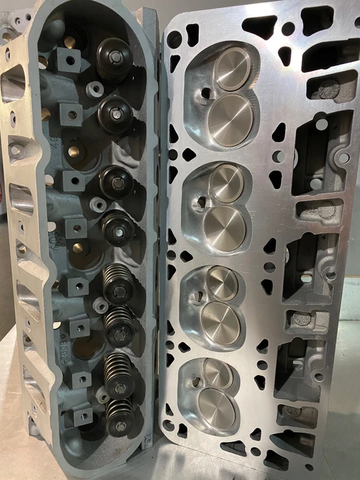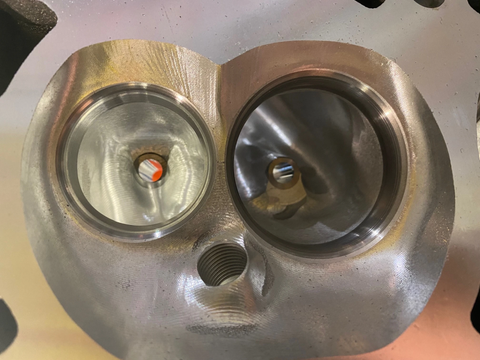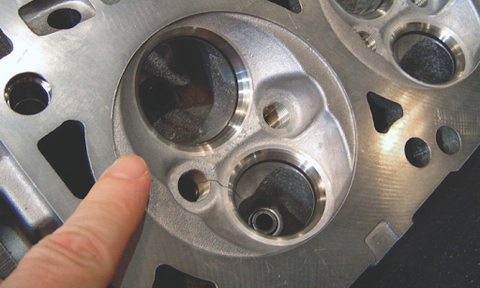An engine cylinder head is an integral part of any internal combustion engine. One function of it is to close the top of the combustion chamber. Bolted to the engine block’s top, the cylinder head’s gasket seals off the combustion chamber. The spark plugs are usually in the cylinder head and ignite the air/fuel mixture.
The engine cylinder head has intake and exhaust runners, valves, oiling passages, and cooling passages. It also has rockers to open and close the valves, valve springs and may hold the camshaft(s). The cylinder head function allows the engine to breathe the air it needs for combustion and expel the exhaust gasses.

History of Cylinder Heads
Some engines from the late 1800s through the 1950s had flathead cylinder heads. Flathead engines, or flathead cylinder heads, were widely used internationally by automobile manufacturers until they got replaced by more efficient overhead valve OHV and overhead camshaft OHC engines.
Types of Cylinder Heads
The passing air only cools air-cooled cylinder heads. Large cooling fins commonly identify these. This cooling method’s advantages are it is reliable, inexpensive and straightforward to build. Any repairs to air-cooled cylinder heads are usually cheaper than other types of cylinder heads. Also, you don't have to worry about the coolant freezing in cold weather.
Most modern engines and their cylinder heads are cooled using a liquid, usually a 50-50 mixture of coolant and water. A correctly mixed coolant can absorb and dissipate large amounts of heat. In cold weather, it can provide plenty of heat to warm the cabin in your vehicle. Liquid cooling is the most efficient and effective way to cool your engine. The only real penalty is the weight and complexity of the system when compared to air-cooling.
Component Parts of Cylinder Heads

Here are some parts descriptions of cylinder heads:
- Inlet and exhaust runners: These ensure that the air-fuel mixture gets into the combustion chamber and that exhaust gasses purge from the cylinders.
- Inlet and exhaust valves: These allow the air-fuel mixture in and the exhaust gases out of the cylinder head.
- Camshafts: Responsible for opening and closing the valves
- Spark plugs: They initiate the combustion of the fuel
Potential Issues with a Cylinder Head
The following signs of problems could indicate a cracked cylinder head, a need for cylinder head repair, or need for a remanufactured cylinder head:
- loss of engine power
- vehicle overheats or is running hot
- observing oil in the coolant reservoir
- coolant level is frequently low
- the odor of coolant when exiting the vehicle
In Conclusion
An engine’s cylinder heads sit a top the engine block and seal the combustion chamber. The intake/exhaust runners, the valves, springs, and rockers allow the engine to breathe in the necessary air/fuel mixture for combustion and evacuate the spent exhaust gasses. A cracked cylinder head will cause an engine to run poorly. Poorly running engines could possibly need cylinder head repair, cylinder head overhaul, or a remanufactured cylinder head. Check with Allied Motor Parts mechanic for diagnosis and recommendations.





